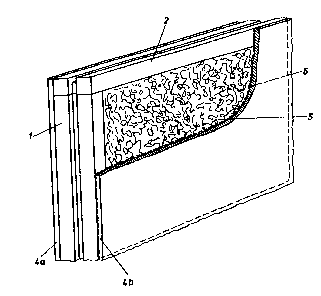Some of the information on this Web page has been provided by external sources. The Government of Canada is not responsible for the accuracy, reliability or currency of the information supplied by external sources. Users wishing to rely upon this information should consult directly with the source of the information. Content provided by external sources is not subject to official languages, privacy and accessibility requirements.
Any discrepancies in the text and image of the Claims and Abstract are due to differing posting times. Text of the Claims and Abstract are posted:
| (12) Patent: | (11) CA 1273178 |
|---|---|
| (21) Application Number: | 1273178 |
| (54) English Title: | METHOD FOR PRODUCING PANEL-LIKE STRUCTURAL ELEMENTS AND A PREFABRICATED HOUSE |
| (54) French Title: | PRODUCTION D'ELEMENTS EN FORME DE PANNEAUX POUR LE BATIMENT, ET MAISON PRE-FACONNEE |
| Status: | Expired and beyond the Period of Reversal |
| (51) International Patent Classification (IPC): |
|
|---|---|
| (72) Inventors : |
|
| (73) Owners : |
|
| (71) Applicants : | |
| (74) Agent: | SMART & BIGGAR LP |
| (74) Associate agent: | |
| (45) Issued: | 1990-08-28 |
| (22) Filed Date: | 1986-05-05 |
| Availability of licence: | N/A |
| Dedicated to the Public: | N/A |
| (25) Language of filing: | English |
| Patent Cooperation Treaty (PCT): | No |
|---|
| (30) Application Priority Data: | |||||||||
|---|---|---|---|---|---|---|---|---|---|
|
ABSTRACT
For the purpose of producing panel like structural
elements in which wooden frames are boarded on both sides
and the interspace is filled with an insulating material,
the wooden frames are initially boarded on one side only,
after which water-glass is sprayed-in and wood wool is
introduced as a layer of about 2 cm in thickness and is
also sprayed with water-glass, additional layers of wood
wool being then introduced, each being sprayed with water-
glass, until the space defined by the wooden frames and
panel is full. Finally, a second panel is fitted, thus
closing off the structural element. The panel facing
the interior of the prefabricated house may have its inside
coated with a layer of wax.
Note: Claims are shown in the official language in which they were submitted.
Note: Descriptions are shown in the official language in which they were submitted.

2024-08-01:As part of the Next Generation Patents (NGP) transition, the Canadian Patents Database (CPD) now contains a more detailed Event History, which replicates the Event Log of our new back-office solution.
Please note that "Inactive:" events refers to events no longer in use in our new back-office solution.
For a clearer understanding of the status of the application/patent presented on this page, the site Disclaimer , as well as the definitions for Patent , Event History , Maintenance Fee and Payment History should be consulted.
| Description | Date |
|---|---|
| Inactive: IPC from MCD | 2006-03-11 |
| Time Limit for Reversal Expired | 1999-08-30 |
| Letter Sent | 1998-08-28 |
| Grant by Issuance | 1990-08-28 |
There is no abandonment history.
| Fee Type | Anniversary Year | Due Date | Paid Date |
|---|---|---|---|
| MF (category 1, 7th anniv.) - standard | 1997-08-28 | 1997-08-15 |
Note: Records showing the ownership history in alphabetical order.
| Current Owners on Record |
|---|
| PETER BRAUCHL |
| PETER BRAUCHL |
| Past Owners on Record |
|---|
| None |